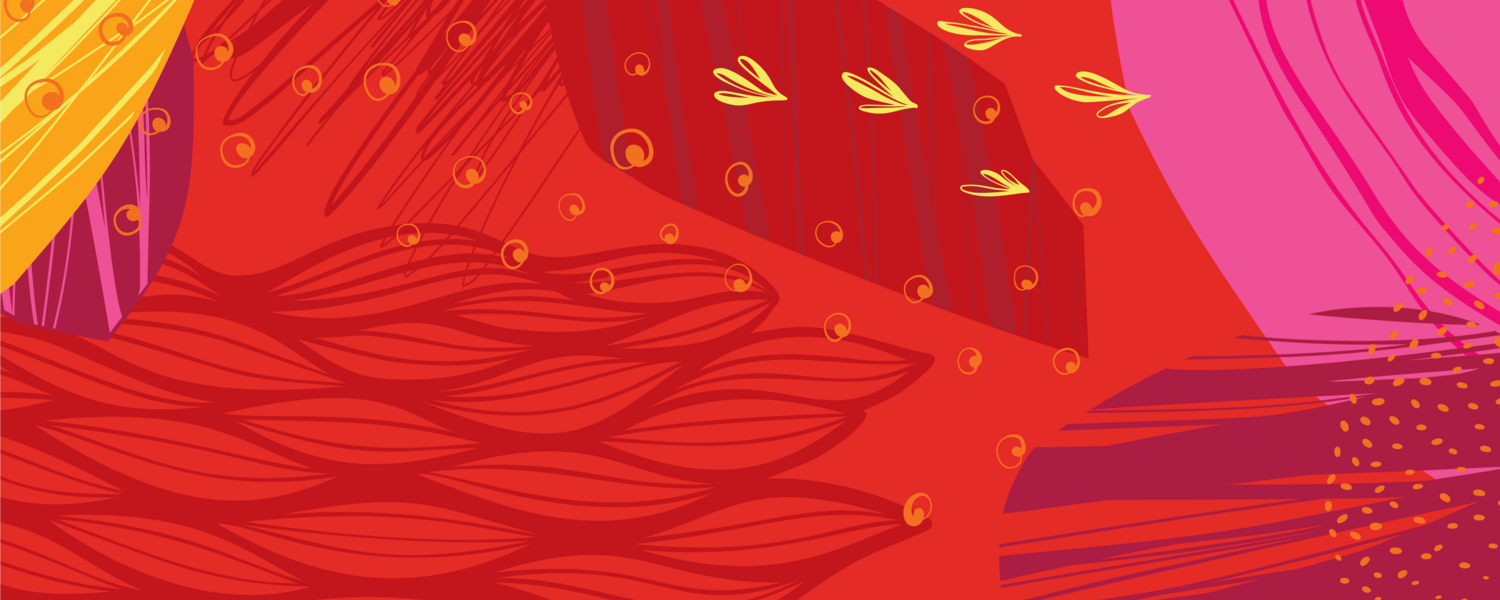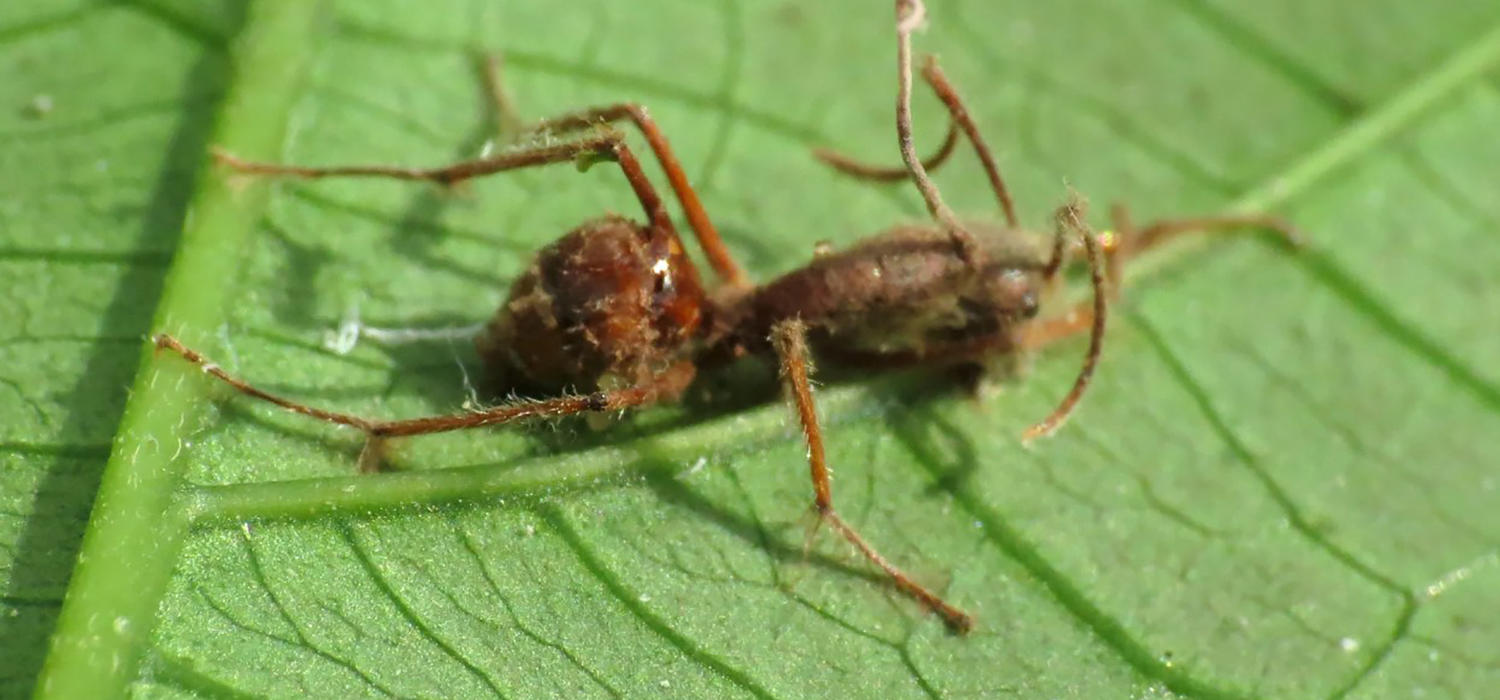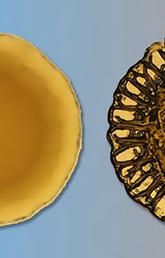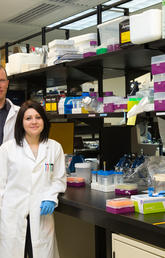Imagine, for a second, that you are an ant. You’re busy crawling along the ground doing work for your colony when something lands on the outside of your body.
This something is the spore of the cordyceps fungus. The spore germinates, and the filaments that the fungus is composed of begin to push through your exoskeleton and grow into your body.
Enzymes from the fungus start breaking down your body to feed itself, and the filaments wrap around the muscles in your body, taking control of them like a marionette.
Once the fungus has spread through your body, it will walk you, zombie-like, up a plant and, once it finds a location with the perfect combination of temperature and humidity, make you bite into a leaf in a death grip. The fungus then begins to grow a spore-producing stalk out of your head, preparing to send a new wave of spores down upon your ant brethren.
It’s the zombie-like control the fungus has over its insect hosts that inspired HBO’s latest hit show The Last of Us and the game that preceded it. In the game and show, cordyceps adapts to infect humanity, quickly leading to the end of civilization.
Does truth follow fiction?
However, if you’re concerned the same fate that befell the ants or the humans in the show might befall you, a University of Calgary expert says there is nothing to fear.
“We are not at risk from cordyceps,” says Dr. Heather Addy, a teaching professor emerita in the Department of Biological Sciences.
Addy says a key protection we have against cordyceps, and other types of fungi, is our body temperature. At 37 degrees Celsius, the human body is too warm for the fungus to grow in.
Another defence for cordyceps in particular is the complexity of the human body compared to that of ants and other insects, so the fungus wouldn’t be able to hijack us very well.
But just because we’re at no risk to become fungus puppets doesn’t mean all fungi are harmless either.
Not all fungi are harmless
“There are a lot of fungi we should be worried about, for sure,” says Addy. “They’re not going to take over our bodies, but they are going to be able to make us very sick, or even kill us if we don’t have healthy immune systems.”
One reason for an increased human susceptibility to fungal infection, which The Last of Us posits, is as the planet warms due to climate change, fungi will adapt to the increasing temperatures, making our body temperature defence weaker. Says Addy:
The gap between our body temperature and the temperature at which most fungi can grow is getting narrower as we raise the environmental temperature.
Addy says many of the fungi that cause human disease live in the soil where there is lots of organic matter, like animal droppings and decaying plant matter. They’ve become more threatening because they have evolved ways of defending themselves against soil organisms like invertebrates and amoebas.
She says a lot of the defence mechanisms they use against these organisms can also be used against our immune systems.
“White blood cells engulf invaders and break them down, and those are the same mechanisms soil amoeba use to feed on fungi,” says Addy.
“So, because the fungi can protect themselves against those amoebas, they do the same thing to overcome our immune system.”
Fungi infect the human body either through inhalation of spores or through open wounds. There are also species of fungi, like the species of Candida, that live on our bodies normally but can spread if an antibiotic or medication causes a change to the body.
Newly emerging species
Addy says a newly emerging species, Candida auris, has become particularly concerning. This fungus is suggested to be the first to have evolved as a human pathogen, first gaining the ability to grow at warmer temperatures as climate change affected the saline wetlands it lived in, then spreading by birds to rural areas where humans and birds have frequent contact, allowing the fungus to make the jump to humans.
“The worrying thing about this fungus is it is resistant to a lot of anti-fungal chemicals that we might use to treat infections,” says Addy, who notes perhaps because it was exposed to those chemicals in the environment.
This leads to another aspect about fungi The Last of Us got right. Addy says there are far fewer treatments for fungal infections compared to bacterial infections.
One reason for this is because fungi tend to be overlooked. Addy says there are relatively few people studying fungi and research into human fungal diseases is very poorly funded, typically receiving only a small fraction of the funding spent on other diseases.
“There’s been less attention paid to them overall and in medical research,” she says.
Another challenge for treating fungal infections is that humans are so closely related to fungi that there are fewer targets that we can use to attack the fungus that won’t also attack our own cells.
“People who do have to take an anti-fungal medication often get even sicker because it’s affecting their own cells,” says Addy.
On top of that, just like bacteria, fungi are also evolving to become resistant to the drugs we do have. Addy says we also use some of the same category of drugs to treat our fungal infections that are used to spray agricultural fields, so if those fungi have already been exposed, they have developed resistance to the chemicals out in the environment.
Fungal infections often overlooked
Fungal infections also tend to take longer to diagnose. The early symptoms for infections are similar to those of other diseases and because fungi are overlooked many doctors are not familiar with what to look for in the early stages.
“By the time you’re diagnosed, it’s pretty far along.”
While there are currently a few hundred species of fungi that cause disease in humans, Addy says the worrying thing is these fungi don’t need to rely on human infection to survive.
Unlike cordyceps, which needs to infect ants and other insects to continue its life cycle, these fungi are just opportunistic.
“Because they don’t need us, they don’t care if they kill us or not,” says Addy. “We’re just another food source for them, so there’s no pressure on them evolve to cause less severe disease.”








